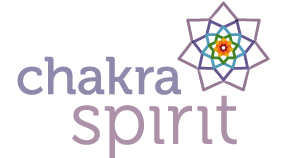by guest author Harry Cline, founder, New Caregiver
Retirement is the perfect opportunity to pick up new wellness strategies for warding off illness and nurturing longevity. Yoga and meditation are two wonderful ways to accomplish this. These activities can benefit people of any age and are customizable to suit your specific needs or desired areas of focus. Here’s how you or your senior loved one can benefit from yoga and meditation as well as some quick tips to get started.
The Benefits of Yoga and Meditation for Seniors
Improved Gut Health
Yoga is a great way to deal with gastrointestinal issues and protect your gut health. Engaging in regular physical activity, such as yoga, can boost the growth of beneficial microbes in the gut. According to Mind Body Green, the twisting poses involved in yoga also encourage the liver and kidneys to flush toxins from the body and relieve bloating. Research has found a strong link between gut health and various other functions in the body, suggesting that the health of our gut can impact our mood and energy levels. Taking steps to improve your gut health while engaging in a daily yoga practice will give you a double-whammy of health benefits.
Less Stress
Yoga and meditation are known for being relaxing activities. Clearing the mind and breathing deeply tells the brain that it’s okay to relax, switching off the “fight or flight” response and prioritizing mental rejuvenation. According to Harvard Medical School, studies have shown that mindfulness meditation can ease anxiety and teach us how to deal with unproductive worries.
Greater Mobility
Yoga can help boost your mobility by stretching tense muscles, strengthening your core, enhancing joint health, and improving your balance. As a result, you’ll be able to enjoy greater independence and significantly reduce your risk of falls.
Better Respiration and Circulation
Both yoga and meditation involve focused breathing. The general technique involved in breathing exercises is to maintain an awareness of your breathing pattern, deepening and slowing your breath to encourage relaxation. This form of breathing, as opposed to shallow chest breathing, allows more oxygen into your blood and improves circulation.
More Happiness
Practicing yoga tends to give people a sense of general well-being. When we exercise, our bodies respond by releasing feel-good hormones, which block pain and make us feel at ease. Yoga can also help improve your self-esteem as you begin to feel more empowered.
How to Get Started with Yoga
You don’t need any complicated equipment, training, or skills to learn yoga — all you need is a yoga mat and plenty of space around you to stretch out completely. Seniors may want to start with gentle yoga poses or try out chair yoga if they have mobility limitations or joint pain. For guidance, sign up for a senior-friendly yoga class in your community. If cost is a concern, be sure to check your Medicare plan. Medicare Advantage providers like Humana offer Silver Sneakers benefits, which provide access to yoga classes and fitness centers across the country at no extra cost to you. If you don’t have this additional benefit, look for studios that offer introductory rates or sliding scale.
When considering yoga styles, some recommended yoga practices for seniors are Hatha, Anusara, Iyengar, and Kundalini. If you would rather attend an at-home class of one, check out these yoga poses for seniors recommended by StyleCraze.
How to Get Started with Meditation
Meditation is easy to start. Find a quiet place in your home that’s free from distracting noises or clutter. You can sit upright, lean against something, or lie completely flat on your back. The hardest thing about meditation is quieting the mind. You will find this gets easier as you learn to dismiss your thoughts and pull your focus back to your breath. However, if you’re finding yourself frustrated when you get started, take advantage of tools to help you maintain focus. Keep your eyes open and fixed on a calming object or listen to a guided meditation recording.
As a senior, it’s more important now than ever before to support the connection between your mind and body. Engaging in healthy wellness activities like yoga and meditation can help you discover emotional coping skills and enhance your body’s resilience to disease or injury. That way, you can live your senior years in health and happiness.

